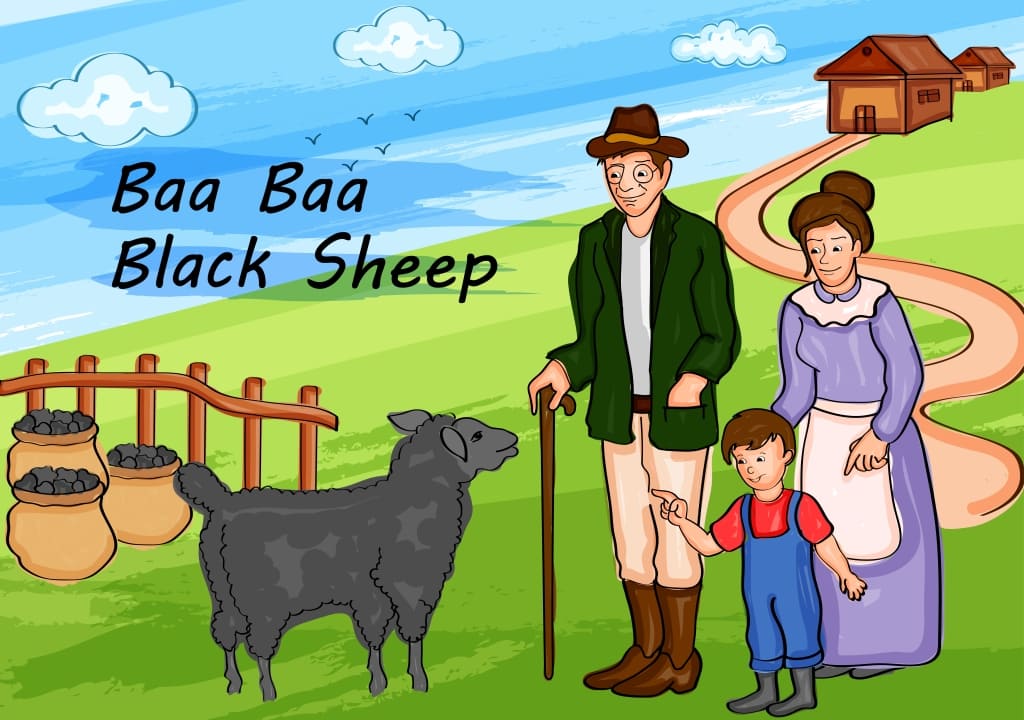The pattern of Rhyme at the end of each line of a poem is called a rhyme scheme of the poem. It refers to the rhyming words’ arrangement. In poetry, poets use a variety of rhyme patterns. A rhyme scheme has the power to alter the poem’s tempo and flow. It also aids the poet in effectively communicating his thoughts. Rhyme schemes are frequently characterized by letters indicating rhyming lines.
Poets use a variety of rhymes in their writing, including internal rhymes, slant rhymes, eye rhymes, identical rhymes, and more. A rhyme scheme comprising shared vowel sounds or consonants is one of the most commonly used techniques to write a rhyming poem. We will be looking at different types of Rhyme schemes of poems with their examples.
Alternate Rhyme
In an alternate rhyme, the first and third lines rhyme at the conclusion of each verse, while the second and fourth lines rhyme at the end of each stanza, following the pattern ABAB. Poems with four-line stanzas employ this rhyme system.
The rhyming scheme is also known as ABAB and rhymes like “ABAB CDCD EFEF GHGH.”
E.g., see a few lines from “Shall I compare thee to a summer’s day?” by William Shakespeare for more clarity.
“Shall I compare thee to a summer’s day? (A)
thou art more lovely and more temperate: (B)
Rough winds do shake the darling buds of May, (A)
And summer’s lease hath all too short a date; (B)
Sometimes too hot the eye of heaven shines, (C)
And often is his gold complexion dimm’d; (D)
And every fair from fair sometimes declines, (C)
By chance or nature’s changing course untrimm’d (D)”
Ballade
When it comes to rhyming patterns, ballades become more complicated. A ballade will have 28 lines in total, including three 8-line stanzas with the ABABBCBC rhyming pattern. A 4-line envoi with the rhyme scheme BCBC will be included at the conclusion.
Each stanza’s last line is the same, which is known as a refrain.
Here is one stanza from Andrew Lang’s “Ballade of the Optimist,”
“Heed not the folk who sing or say (A)
In sonnet sad or sermon chill, (B)
“Alas, alack, and well-a-day, (A)
This round world’s but a bitter pill.” (B)
Poor porcupines of fretful quill! (B)
Sometimes we quarrel with our lot: (C)
We, too, are sad and careful; still (B)
We’d rather be alive than not. (C)”
You may also like to read: Rules of Writing a Story
Coupled Rhyme
A two-line stanza with the rhyme scheme AA BB CC or a similar dual rhyming scheme is known as a coupled rhyme. Rhyming couplets are the words used to describe the rhymes.
You will find that Shakespeare’s sonnets all have rhyming couplets at the end, like this one.
Here is coupled Rhyme by William Shakespeare from “Sonnet 18”
“So long as men can breathe or eyes can see, (A)
So long lives this, and this gives life to thee. (A)“
Enclosed Rhyme
The first and fourth lines rhyme, and a pair of fresh rhymes are sandwiched in the centre. An internal rhyme scheme is sometimes known as a rhyme scheme within a rhyme scheme.
John Milton’s sonnet follows the standard Italian sonnet rhyme scheme: ABBA ABBA. CDECDE.
“When I consider how my light is spent (A)
Ere half my days in this dark world and wide, (B)
And that one talent which is death to hide (B)
Lodg’d with me useless, though my soul more bent (A)
To serve therewith my Maker, and present (A)
My true account, lest he returning chide;(B)
“Doth God exact day-labour, light denied?” (B)
I fondly ask. But Patience to prevent (A)
That murmur, soon replies: “God doth not need (C)
Either man’s work or his own gifts; who best (D)
Bear his mild yoke, they serve him best. His state (E)
Is kingly. Thousands at his bidding speed (C)
And post o’er land and ocean without rest: (D)
They also serve who only stand and wait.(E)”
Limerick
A five-line poem that begins with a coupled rhyme scheme but ends with lines three and four enclosed in a rhyme scheme that matches lines one and two.
A limerick is a five-line poem that follows the AABBA rhyme scheme.
E.g., Mother Goose, “Hickory, Dickory, Dock”
“Hickory, dickory, dock, (A)
The mouse ran up the clock; (A)
The clock struck one, (B)
And down he run, (B)
Hickory, dickory, dock. (A)”
Monorhyme
As the name suggests mono means one or single. A monorhyme follows one Rhyme throughout each line or the entire poem.
For example, see an excerpt from “Silent, Silent Night.” by William Blake.
“Silent Silent Night (A)
Quench the holy light (A)
Of thy torches bright (A)
For possessd of Day (B)
Thousand spirits stray (B)
That sweet joys betray (B)
Why should joys be sweet (C)
Used with deceit (C)
Nor with sorrows meet (C)”
You may also like to read: Writing Guide: What Is Creative Writing and Its Types?
Villanelle
A type of poem with five three-line stanzas that follow a rhyme scheme of ABA. The villanelle concludes with a four-line stanza with the pattern ABAA.
For example, see an excerpt from “The House on the Hill” by Edwin Arlington Robinson.
“They are all gone away, (A)
The House is shut and still, (B)
There is nothing more to say. (A)
Through broken walls and gray (A)
The winds blow bleak and shrill: (B)
They are all gone away. (A)”
Terza Rima
A terza Rima is an Italian form of poetry composed of tercets in which the second line of each stanza rhymes with the first and last line of the following stanza. It concludes with a couplet that rhymes with the penultimate stanza’s middle line. ABA BCB CDC DED EE is the pattern.
E.g., Percy Shelley’s, “Ode to the West Wind.” (excerpt)
“O wild West Wind, thou breath of Autumn’s being, (A)
Thou, from whose unseen presence the leaves dead (B)
Are driven, like ghosts from an enchanter fleeing, (A)
Yellow, and black, and pale, and hectic red, (B)
Pestilence-stricken multitudes: O thou, (C)
Who chariotest to their dark wintry bed” (B)
Triplet
A triplet is a group of three lines in a stanza (called a tercet) that rhyme at the end.
To understand this let us see an excerpt from “The Phoenix and the Turtle” by William Shakespeare.
“Truth may seem but cannot be; (A)
Beauty brag but ’tis not she; (A)
Truth and beauty buried be. (A)
To this urn let those repair (B)
That are either true or fair; (B)
For these dead birds sigh a prayer. (B)”
Simple four-line Rhyme
These poems use the ABCB rhyme scheme. This is a simple pattern that runs throughout the poem.
E.g., Samuel Taylor Coleridge, “The Rime of the Ancient Mariner” (excerpt)
“The Bridegroom’s doors are opened wide, (A)
And I am next of kin; (B)
The guests are met, the feast is set: (C)
May’st hear the merry din.’ (B)
He holds him with his skinny hand, (A)
‘There was a ship,’ quoth he. (B)
‘Hold off! unhand me, grey-beard loon!’ (C)
Eftsoons his hand dropt he. (B)”
Rhyme schemes are used by poets for many of the same reasons that rhyme is used: they make language sound more beautiful and intelligently produced, similar to music. Rhymes repeat at regular intervals in the majority of rhyme schemes, substantially boosting both the rhythm and musicality of poetry and, as a result, making the poem more pleasant to listen to, easier to understand, and memorable.







